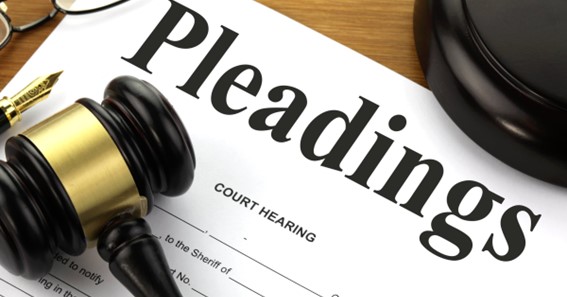Are you curious to know what is pleading in CPC? You have come to the right place as I am going to tell you everything about pleading in CPC in a very simple explanation. Without further discussion let’s begin to know what is pleading in CPC?
What Is Pleading In CPC?
Pleading is a legal term used in the Code of Civil Procedure (CPC) that refers to the written statements filed by the plaintiff and the defendant in a civil lawsuit. Pleading is an essential part of the civil litigation process as it outlines the facts and issues in dispute in a clear and concise manner. Pleading serves as the basis for the trial of the case, and the judge makes decisions based on the pleadings filed by the parties.
The CPC provides for various types of pleadings, including the following:
- Plaint: A plant is the initial pleading filed by the plaintiff, outlining the facts of the case, the relief sought, and the legal basis for the claim. It is a written statement of the plaintiff’s case.
- Written Statement: A written statement is the pleading filed by the defendant in response to the plant. It is a written statement of the defendant’s defence.
- Counterclaim: A counterclaim is a claim made by the defendant against the plaintiff, seeking a remedy or relief for the defendant’s damages or losses. It is filed in response to the plant.
- Rejoinder: A rejoinder is a reply filed by the plaintiff to the defendant’s written statement, in response to any new facts or issues raised in the written statement.
- Sur-Rejoinder: A sur-rejoinder is a further reply filed by the defendant to the plaintiff’s rejoinder.
Pleading plays a crucial role in the legal process as it helps to define the issues in dispute and narrow the focus of the trial. The judge relies on the pleadings to determine the legal and factual issues that need to be addressed at trial. Therefore, it is important that the pleadings are clear, concise, and accurately reflect the parties positions.
Conclusion
In conclusion, the pleading is a fundamental aspect of the civil litigation process, and it is important for parties to understand the types of pleadings available under the CPC. Pleading helps to define the issues in dispute and provides the basis for the trial of the case. Therefore, parties should ensure that their pleadings accurately reflect their positions and are filed in a timely manner to avoid any delays in the legal process.
FAQ
What Is The Definition Of Pleadings In CPC?
“Pleadings” are statements of facts in writing drawn up and filed in Court by each party to a case. As per Order VI, R. 1 of the Civil Procedure Code, 1908 pleading means plaint or a written statement.
What Is The Definition Of Pleading?
pleading, in law, written presentation by a litigant in a lawsuit setting forth the facts upon which he claims legal relief or challenges the claims of his opponent. A pleading includes claims and counterclaims but not the evidence by which the litigant intends to prove his case.
What Is Pleading Under CPC Order 6?
Order VI Rule 17 of the CPC grants permission to the parties to the case to amend their pleadings at any stage of the proceedings. The proviso under this rule says that after the trial has commenced, an application for amendment shall not be allowed.
What Is Pleading And Its Rules?
The first fundamental of rule of pleading is that it should only state facts and not the law. The facts that are stated in the pleading must be material facts. It should never state or disclose the evidence. The facts stated in the pleading must be in a concise form.
I Have Covered All The Following Queries And Topics In The Above Article
Pleading In CPC Notes
Essentials Of Pleading In CPC
Types Of Pleading In CPC
Object Of Pleading
Pleadings In CPC Pdf
Amendment Of Pleading In CPC
Importance Of Pleading Under CPC
Plaint And Written Statement Under CPC
What Is Pleading In CPC
What is pleading in a civil case
What do you mean by pleadings
